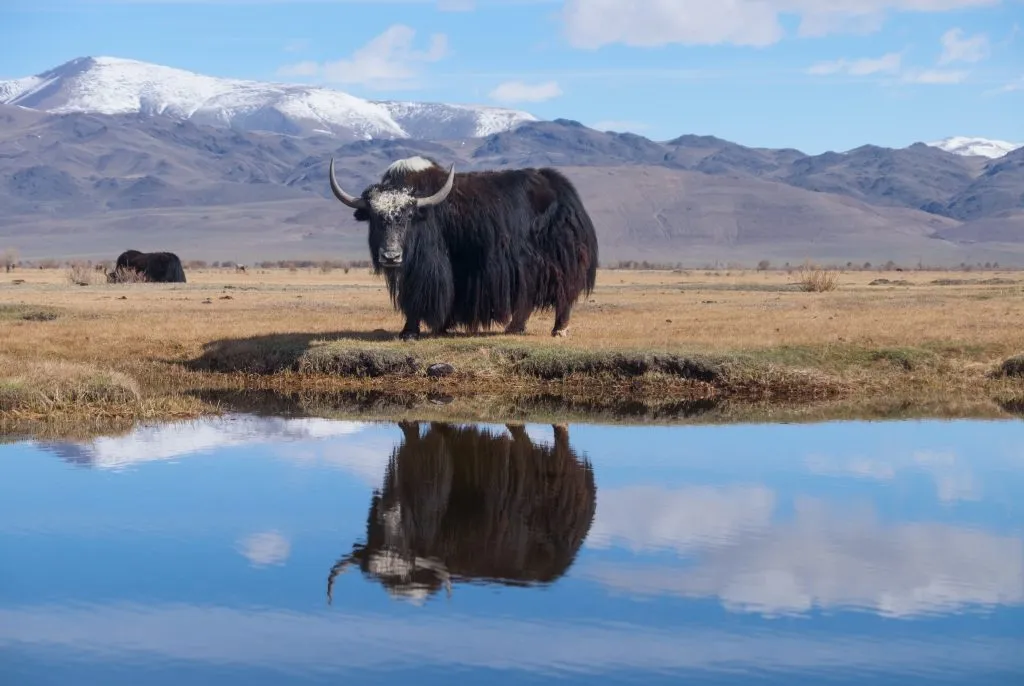Samaan Lateef | New Delhi
As climate change tightens its grip on the world’s highest mountain range, the sturdy yaks of the Himalayas find themselves at the forefront of environmental upheaval, battling rising temperatures and escalating risks to their health and livelihoods.
The impact of climate change on yak populations in the Himalayas is a topic of debate among scientists. While some argue that climate change does not directly affect the productivity and reproductive performance of yaks, others point to the observations of yak herders in northern Bhutan as evidence of the challenges they face due to rising temperatures and climate variability.
According to a research paper titled “Possible Consequences of Climate Change on Survival, Productivity and Reproductive Performance, and Welfare of Himalayan Yak (Bos grunniens),” published this August, authored by S. Sapkota of the School of Veterinary Science, Massey University, New Zealand; K. P. Acharya of the Animal Quarantine Office, Department of Livestock Services (DLS), Kathmandu; R. Laven of the Department of Veterinary Medicine, University of Cambridge; and N. Acharya, Department of Pharmacology and Toxicology, the University of Texas at Austin, climate change may be increasing the exposure of yaks to infectious diseases.
Dr. Sapkota states, “Losses from infectious diseases can be high in individual herds. It is likely that climate change is increasing the exposure of yak to disease. Firstly, increased temperatures may increase contact between yak and cattle, particularly during winter. As a large proportion of the infectious disease recorded in yak is likely to come from cattle.”
However, the authors also acknowledge that most analyses of climate change and yak diseases lack sufficient data to draw definitive conclusions. They suggest that while climate change may play a role in increased illness among yaks, socio-economic factors such as overgrazing and changes in land use are also significant contributors to disease risk.
In another study titled “Signs of Climate Warming Through the Eyes of Yak Herders in Northern Bhutan,” authors Wangchuk, Kesang, and Wangdi highlight the challenges faced by yak herders due to warming temperatures. They note declines in animal health, difficulties in transhumant migration, and increased instances of natural disasters such as flash floods and landslides.
Nestled in the majestic landscapes of Himachal Pradesh, Sikkim, Arunachal Pradesh, and Ladakh, the yak stands as the quintessential symbol of resilience for highlanders across these regions. In Ladakh, where the environment is among the harshest, yaks endure by grazing on grass with leaf blades barely an inch long during the summer, descending to lower altitudes in the winter. Renowned for its versatility as an excellent pack animal in snow-bound areas, the yak traverses treacherous terrain with ease, covering distances of 25-30 km per day while carrying loads weighing up to 125-150 kg.
Yak herders, deeply entrenched in tradition, collect these revered animals from various villages and lead them to grazing grounds, where they coexist with their families, crafting butter from the yak’s nutritious milk.
However, despite their cultural significance and adaptability, the yak population in India is dwindling at an alarming rate.
Animal Husbandry and Dairying, NRC-Yak Director Dr Mihir Sarkar has said that the Yak population in the country is decreasing at an alarming rate over the years.
According to recent data, India is now home to approximately 58,000 yaks, a sharp decline from the 132,000 recorded in 1977. Arunachal Pradesh alone accounted for 13,000 yaks in the 2003 census, highlighting the species’ diminishing presence in the country.
“This drastic decline in yak population in India has become a cause of concern for all stakeholders,” Dr Sarkar said.
Officials at National Research Centre on Yak (NRCY), attributes this decline to various factors, including reproductive disorders, inadequate nutrition, and degradation of natural grasslands. “Poor management practices and inbreeding further exacerbate the situation,” said a scientist at NRCY, underscoring the urgent need for intervention to reverse this trend.
Established in 1989, the NRCY is pioneering efforts to conserve and enhance yak productivity through scientific research and community engagement. Through initiatives such as semen collection, artificial insemination, and in-vitro fertilization, the centre aims to mitigate reproductive challenges and promote sustainable yak farming practices.
Despite these efforts, challenges persist, with the latest census revealing a 25% drop in India’s yak population since 2012.
“Most yak herders have been affected by warming, but few have lost their animals to flash floods and landslides,” the study reports. “Although this study did not cover a detailed assessment of yak mortality due to predation, respondents revealed during informal discussions that predators have increased in number and that they have sighted new species of wild animals.”
The findings of these studies align with the perceptions of yak herders, indicating that rising temperatures pose significant challenges to their traditional way of life. As temperatures continue to rise, herders may be forced to reduce herd sizes, impacting their livelihoods and necessitating the exploration of alternative economic opportunities.




